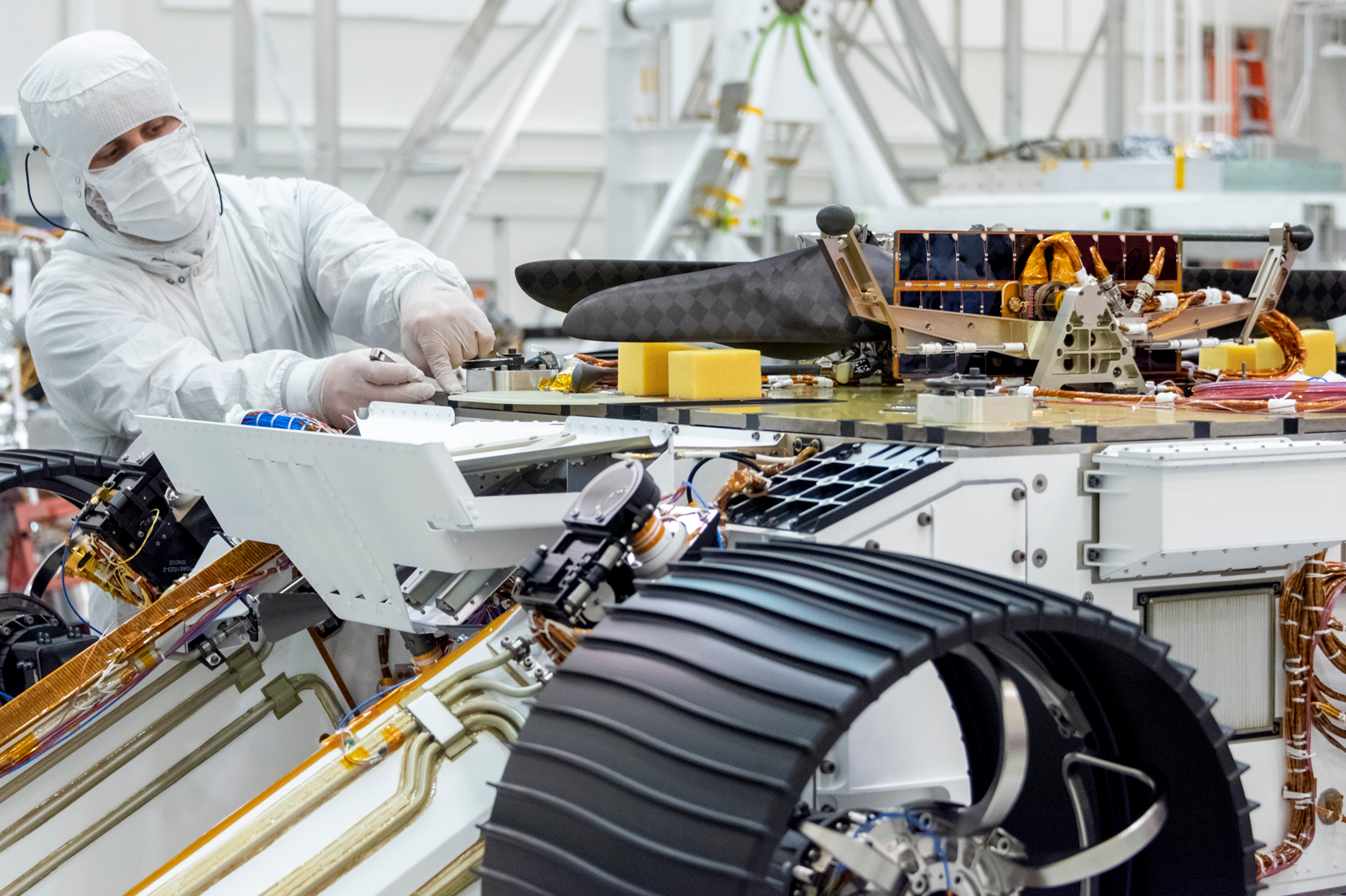maxon drives fly to the Red Planet with NASA's Perseverance rover
NASA’s fifth rover is on the way to Mars. Its main mission is to collect soil samples that will be analysed on
Earth later. The rover will also carry a helicopter that will perform the first flights on the Red Planet.
maxon's precision DC and BLDC motors will be used for numerous mission-critical tasks.
maxon's drive systems are omnipresent on Mars. Electric motors from Switzerland have been used in virtually
every successful robotic mission over the last three decades. There are now more than 100 of them on the Red
Planet and there are likely to be more soon.
On July 30, an Atlas V rocket launched the new Perseverance rover
on its way to Mars, where it will seek signs of former life on the planet. However, its most important job is to
take multiple soil samples, seal them in containers and deposit them on the surface of Mars so that a future
mission can return them to Earth. Several maxon motors will be used to handle the samples inside the rover. For
example, maxon DC motors are installed in the robotic arm, which moves the samples from station to station.
maxon motors will also be used for sealing and depositing the sample containers.
NASA's Jet Propulsion Laboratory (JPL), which is carrying out the mission, has contracted maxon to produce ten
drives for the rover. As with almost all previous Mars missions, these drives are based on standard products
from maxon's catalogue but have been modified. For the first time, NASA chose brushless DC motors: nine EC 32
flat and one EC 20 flat in combination with a GP 22 UP planetary gearhead. Working closely with JPL specialists,
maxon engineers developed the drives over several years and tested them thoroughly to achieve the highest
standards of quality. "We've learned a lot from this exciting project," says Robin Phillips, head of the maxon
SpaceLab. "We now have very broad expertise in space applications and have established quality assurance
processes that meet the expectations of the industry. Customers from other industries such as the medical
sector, where requirements are often similar, also benefit from this know-how."
Space missions place the highest
demands on drive systems. These include vibrations during the rocket launch, vacuum during the journey, impacts
on landing, and harsh conditions on the surface of Mars, where temperatures fluctuate between -125 and +20
degrees Celsius and dust penetrates everywhere.


